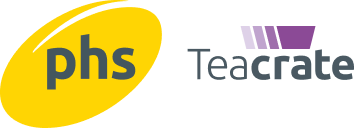In the ever-evolving landscape of retail, optimising supply chain efficiency is a constant pursuit. One innovative solution gaining traction in the industry is the adoption of rental crates.
Moving away from traditional packaging methods, the transition to rental crates presents a unique set of opportunities and challenges.
However, it may be the best decision you ever made:
Understanding the Need for Change
Before embarking on the journey of incorporating rental crates into your retail supply chain, it's crucial to understand the driving forces behind this shift, and to be 100% sure of why you’re making the change.
Identify pain points in your current packaging and logistics processes, such as excessive waste, rising costs, or inefficiencies in handling. Recognising these challenges will provide a solid foundation for evaluating how rental crates can address specific issues within your organisation.
Of course, you will need to understand a little more than just that before moving forward:
Conducting a Thorough Assessment
Begin the transition by conducting a thorough assessment of your current packaging and logistics infrastructure. Evaluate the volume, size, and types of products you handle, as well as the frequency and distance of transportation. This analysis will guide you in determining the appropriate types and quantities of rental crates needed for your unique requirements.
Employee Training and Change Management
Introducing a new system, especially one as fundamental as packaging, requires comprehensive training for your staff. Equip them with the necessary knowledge and skills to handle, pack, and transport goods using rental crates efficiently. Additionally, try to foster a positive change management culture within your organisation, emphasising the benefits of the transition and addressing any concerns or resistance from team members.
Establishing Clear Communication Channels
Effective communication is paramount during the transition period. Ensure that all stakeholders, both internal and external, are well-informed about the shift to rental crates. Clearly communicate the reasons behind the change, the expected benefits, and the steps involved in the process. This transparency will help mitigate any uncertainties and build confidence among your team members, suppliers, and customers.
Piloting the Transition
Consider piloting the transition in a specific region or with a particular product line before implementing it company-wide. This allows you to assess the real-world impact of rental crates on your supply chain without disrupting the entire operation. Gather feedback from employees, monitor key performance indicators, and make necessary adjustments based on the lessons learned during the pilot phase.
Collaborating with Rental Crate Providers
Choosing the right rental crate provider is a crucial aspect of a successful transition. Collaborate with reputable suppliers who offer a range of crate options, customisation possibilities, and flexible rental terms. Establish a strong partnership to ensure a steady and reliable supply of crates, and work together to address any specific requirements or challenges unique to your retail business.
Integrating Technology for Tracking and Visibility
One of the advantages of rental crates is the potential for enhanced visibility and tracking throughout the supply chain. Explore technology solutions, such as RFID or barcode systems, to track the movement of crates from distribution centres to retail outlets. This real-time visibility not only improves inventory management but also facilitates quick identification of any issues or bottlenecks in the logistics process.
Implementing Sustainable Practices
Emphasise the environmental benefits of transitioning to rental crates by incorporating sustainable practices into your supply chain. Highlight the reduction in single-use packaging waste, lower carbon footprint, and overall positive impact on your company's sustainability goals. Communicate these initiatives to environmentally conscious consumers, creating a positive brand image and potentially attracting a wider customer base.
Monitoring and Continuous Improvement
Post-implementation, establish a robust monitoring system to track the performance of rental crates in your supply chain. Collect data on factors such as transportation costs, packaging waste reduction, and overall efficiency gains. Use this information to identify areas for continuous improvement, tweaking processes or addressing challenges as they arise.
Showcasing Success Stories
Share success stories and positive outcomes resulting from the adoption of rental crates within your organisation. Whether it's a significant reduction in packaging costs, improvements in supply chain efficiency, or positive feedback from customers, showcasing these successes internally and externally can inspire confidence and enthusiasm for the new system.
In conclusion, the transition to rental crates in your retail supply chain can be a transformative journey with numerous benefits. By understanding the need for change, conducting a thorough assessment, and implementing effective training and communication strategies, you can navigate the transition successfully. Collaborate with reliable rental crate providers, leverage technology for tracking and visibility, and prioritise sustainability to enhance your overall supply chain performance.
Remember that the key to a smooth transition lies in proactive planning, ongoing monitoring, and a commitment to continuous improvement. Embrace the change, showcase its positive impact, and position your retail business at the forefront of innovation in the industry.
Need Help? Professional Rental Crate Services
If you need any help with this, phs Teacrate are the UK’s leading provider of rental crates for retail, office moves and more.
Moving over 9 million crates every year and supporting industries such as removals and storage, food processing and distribution, retail and fit out companies, we are the market leading crate rental service provider across the UK.
We’re in every geographical area and because we’re next door, everywhere, we are on hand to help wherever you are. With over 100 operational staff and a fleet of 29 vehicles, next working day delivery is available on all stocked items through our national network of depots, conveniently located throughout the UK, which also cater for customer collections at all locations.
To learn more, get in touch today!
